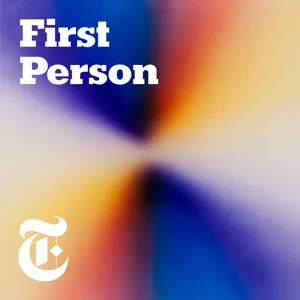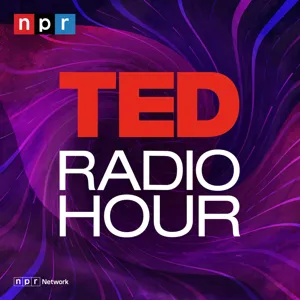Podcast Summary
Building strong community connections: Creating connections within communities can foster meaningful bonds and prepare us for challenges, like natural disasters. Neighbor to Neighbor and ancient practices like bathing demonstrate this.
Building strong community connections can bring about meaningful social bonds and prepare us for various challenges, including natural disasters. Neighbor to Neighbor, a California volunteer's network, emphasizes the importance of relying on the people around us to create a more connected world. Meanwhile, technology, particularly artificial intelligence, will play a significant role in shaping the future. In the realm of health, the belief in the healing properties of water dates back to ancient times, with bathing being a popular practice for spiritual purity and healing various ailments. The importance of bathing in Roman culture led to the establishment of many healing spas throughout Europe, some of which still exist today. These examples demonstrate that the association between bathing and healing is not a unique belief limited to certain cultural backgrounds.
Hot Springs: A Source of Healing and History: Hot springs like Kitikata in Uganda have been visited for centuries for their healing properties and various temperatures, with some hot enough to cook. People visit for both recreation and healing purposes.
Throughout history and across different cultures, people have believed in the healing properties of natural hot springs. The Kitikata hot springs in Uganda serve as an excellent example. These geothermal springs, surrounded by unique rock formations, have been visited by hundreds of people daily for their supposed healing properties. The springs are divided into sections for men, women, and children, and some people even bring home jerry cans filled with the hot water. The springs offer water of varying temperatures, with some hot enough to cook an egg. While some people visit for recreational purposes, most seek healing. The historical significance of hot springs as a source of natural healing and their potential role in the history of cooking are interesting questions for further exploration.
Mabira Hot Springs: Beliefs vs. Reality: The Mabira Hot Springs in Uganda, though believed to have healing properties, have faced threats from environmental changes and human activities. While some report improvements, research finds no special healing properties. Environmental factors impact the water's temperature and quality, making protection crucial.
The Mabira Hot Springs in Uganda, which are believed by many to have healing properties, have faced threats due to environmental changes and human activities. While some claim to have experienced improvements after bathing in the water, the efficacy of these cures is a subject of debate. Researchers have found no special healing properties in the water, and its therapeutic effects could be due to its heat or psychotherapeutic benefits. However, the springs are not eternal phenomena and are susceptible to environmental changes, such as flooding from nearby rivers due to construction or climate change, which can dilute the water and affect its temperature. Local efforts to protect the spring from external water inflows have been reported. The Ganges River in India and Bangladesh is another example of a traditional place of healing via immersion, but it presents its own unique challenges and complexities. Overall, the discussion highlights the importance of considering the environmental conditions and potential threats to natural healing sites.
Exploring the world of springs and spa culture: Springs and spa culture offer unique experiences rooted in nature, tradition, and human connection, with thermal springs providing opportunities for relaxation, reflection, and community building.
The world of springs and spa culture is rich and complex, with various natural phenomena, cultural traditions, and environmental considerations intertwined. From the melting glaciers and permafrost in Iceland, to the beneficial and antibiotic-resistant bacteria, pollution, and religious significance, there's a lot to explore. Another example of spring and spa culture is Japan, known for its 25,000 hot spring sources or onsen. One notable place is Beppu, home to the 8 hells of Beppu, which are thermal springs with unique characteristics that attract tourists. Although not all of them are suitable for bathing, they offer smaller pools for visitors to soak their feet. One of these is the Blood Pond Hell, known for its deep red color and high temperature, which is too hot for bathing but has become a popular tourist destination. In summary, the world of springs and spa culture is a fascinating blend of nature, tradition, and human connection. From the extreme temperatures and unique characteristics of thermal springs to the communal experiences they offer, they provide opportunities for relaxation, reflection, and community building.
Natural Healing Waters vs Modern Medical Treatments: Natural healing waters, like Lithia water, have a rich history but modern medical treatments offer more controlled and effective relief due to precise dosages and calibration.
Astepro offers fast-acting, steroid-free relief from nasal allergy symptoms, making it the fastest 24-hour over-the-counter allergy spray. Meanwhile, traditional healing waters, like Lithia water in Georgia, have intrigued people for centuries due to their potential health benefits. However, the dosage and calibration of these natural sources can be a concern, making modern medical treatments a more controlled and effective option. Lithia water, known for its lithium salt content, has a rich history in Georgia. While most uses of Lithia water involve consumption, there were also Lithia Vapor Baths, which were popular among visitors at luxury resorts like Sweetwater Park Hotel. These baths involved sitting in wooden boxes with steam shooting out, providing a warm and moist experience. Despite the popularity of these baths, the hotel burned down in 1912, leaving only memories and historical records behind. While it's tempting to think that these natural sources might offer the same benefits as modern medications, the dosage and calibration are significant concerns. The example of Lithia water shows how, in the past, people sought relief through various means, but the controlled environment and precise dosages offered by modern medical treatments provide more consistent and effective results.
The Healing Power of Natural Resources: A Historical Perspective: Historically, people believed in the healing properties of natural resources like lithium waters. However, scientific inquiry revealed that some of these claims were unfounded, emphasizing the importance of skepticism and fact-checking.
Throughout history, people have sought out various natural resources, such as healing waters, for their perceived health benefits. Mark Twain wrote about his experience at a spa in France, which he referred to as "I," and called it the "paradise of the rheumatics." At the time, there was a popular belief that lithium waters, including those from Lithia Springs in Georgia, had healing properties. This belief led to a health fad and a profitable business of bottling and selling lithium waters. However, when the US Bureau of Chemistry tested these waters, they found little to no lithium content, leading people to question the validity of the claimed health benefits. Instead, it's possible that people were simply drinking more water than usual, which could have contributed to any perceived improvements in health. The use of lithium tablets as a therapeutic treatment also faced challenges due to the increasing concentrations and dangers of lithium toxicity. Ultimately, the therapeutic use of lithium went out of fashion. This historical example illustrates the importance of scientific inquiry and skepticism when it comes to claims about the health benefits of natural resources.
Lithia Water Springs: Unreliable Treatment for Neurological Conditions: Despite historical claims, lithia water springs offer limited therapeutic benefits for neurological conditions due to inconsistent lithium concentration and potential toxicity risks.
While Lithia Water Springs may have been touted for their potential therapeutic benefits due to their lithium content in the past, it is unlikely that they could have offered significant relief for neurological conditions based on modern understanding. The lack of consistent lithium concentration and the potential risks associated with toxicity and side effects make it an unreliable treatment option. However, it's important to note that lithium has been used effectively as a psychiatric treatment for bipolar disorder since the 1950s, but careful dosage management is crucial to minimize risks. The discovery of lithium as a mood stabilizer marked a significant shift from more invasive treatments like lobotomy and electroconvulsive therapy. Despite its effectiveness and approval by the FDA, lithium remains a controversial treatment due to potential side effects. So, while the allure of naturally occurring lithium springs may hold some intrigue, it's essential to recognize the limitations of relying on them for therapeutic benefits.
Historical beliefs about therapeutic properties of natural spring waters: Modern scientific understanding is necessary to evaluate potential therapeutic value of natural spring waters, as historical beliefs often overstate their benefits and some can be harmful
Throughout history, people have believed that certain natural spring waters held therapeutic properties, such as Lithia water and radium spring waters. However, the levels of these elements in these waters are typically not high enough to provide therapeutic benefits. For instance, Lithia water contains micrograms of lithium, while therapeutic doses require milligrams. Similarly, radium spring waters, though historically significant due to their discovery by Marie and Pierre Curie, have limited commercial uses today and can be harmful due to their radioactivity. Furthermore, the connection between radium springs and therapeutic benefits is largely a coincidence. It's important to remember that historical beliefs about the health benefits of natural spring waters should be taken with a grain of salt and that modern scientific understanding is crucial for evaluating their potential therapeutic value.
The Allure of Radium: A Historical Perspective: People once believed in the health benefits of radium, leading to dangerous quack products and treatments, driven by placebo effect, communal factors, and novelty. Radium Palace and Radium Springs are examples. Modern science debunks these beliefs, but the allure remains.
Throughout history, people have sought out unconventional and sometimes dangerous substances, like radium, for their supposed health benefits. From radium condoms and toothpaste to radium spas, the enthusiasm for radium during the first half of the 20th century led to numerous quack products and treatments. Despite the risks, people were drawn to these offerings due to the placebo effect, communal factors, and the allure of novelty. Radium Palace in the Czech Republic, and Radium Springs in Georgia, are just a few examples of this trend. Though radium has no beneficial role in the human body and is toxic, these places continue to attract visitors today, offering limited radium-based treatments. It's important to remember that these historical practices should not be replicated, and modern science has determined that the supposed health benefits of radium springs are dubious. Nonetheless, the allure of these unique and often radioactive sites remains a fascinating aspect of human history.
Exploring local communities through unique experiences and podcasts: Discover local traditions, volunteer opportunities, calming bedtime stories, and podcasts that explore the strange and unusual, empower communities, and offer comfort to families.
There are unique and meaningful experiences to be found in our local communities, whether it's through thermal springs and spas with rich traditions and alleged healing properties, volunteer networks like Neighbor to Neighbor that help build connections, or calming bedtime stories from Sleep Tight Stories that bring comfort and joy to families. The world can sometimes feel uncertain and disconnected, but these beacons of hope remind us of the importance of community and connection. In the podcast world, Stuff to Blow Your Mind explores the strange and unusual, from thermal springs to monsters and artifacts. Neighbor to Neighbor empowers listeners to grow their communities and prepare for the next big weather event. Sleep Tight Stories offers calming bedtime stories to help children fall asleep and stay asleep. And in Mini Questions, Minnie Driver asks the same 7 questions to a new group of guests each season, revealing limitless answers. So whether you're looking for a new podcast to explore, a way to connect with your community, or a bedtime routine that will bring comfort to your family, there are plenty of options out there. And remember, a rested child is a happy child, so don't forget to check out Sleep Tight Stories for some calming bedtime stories.






